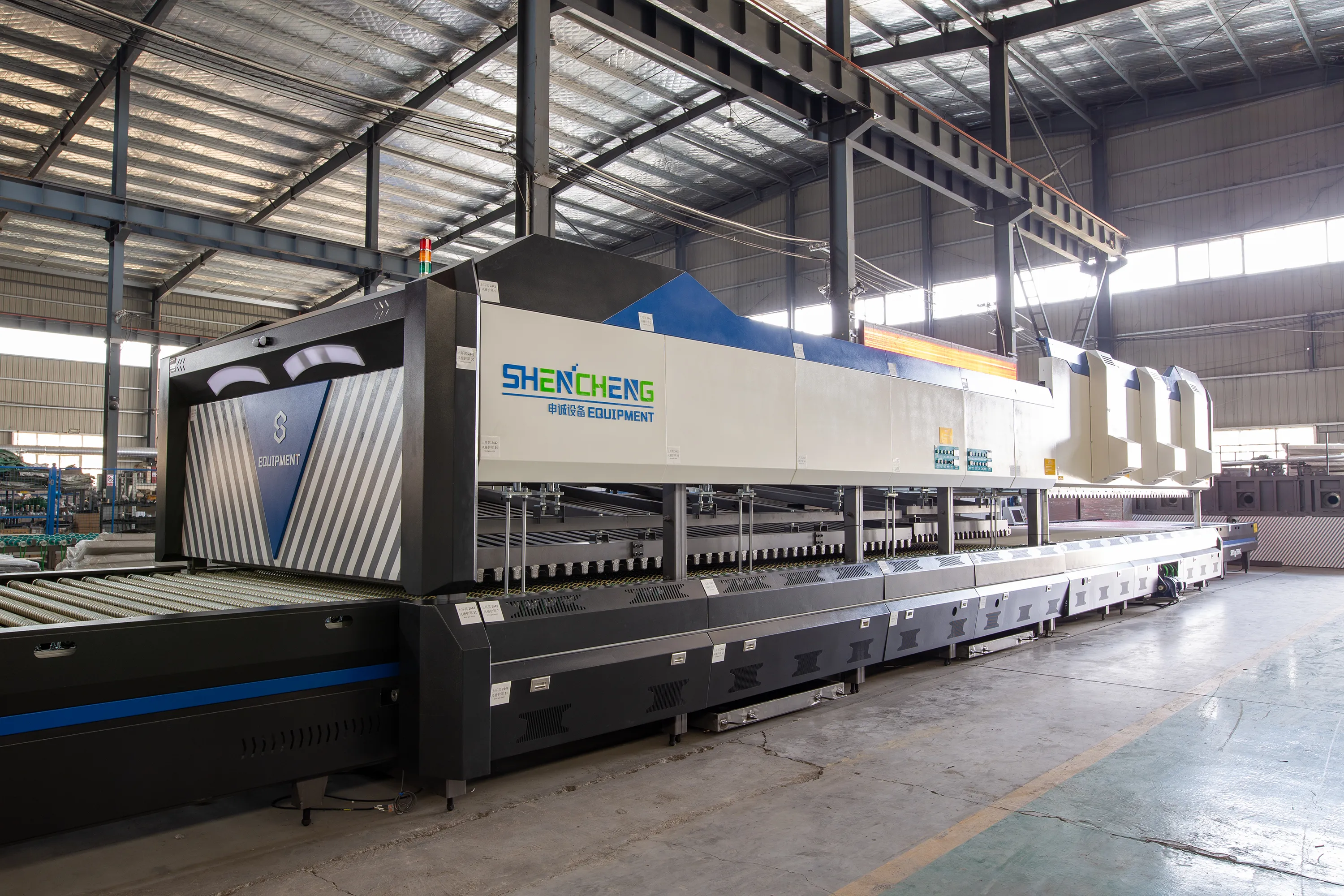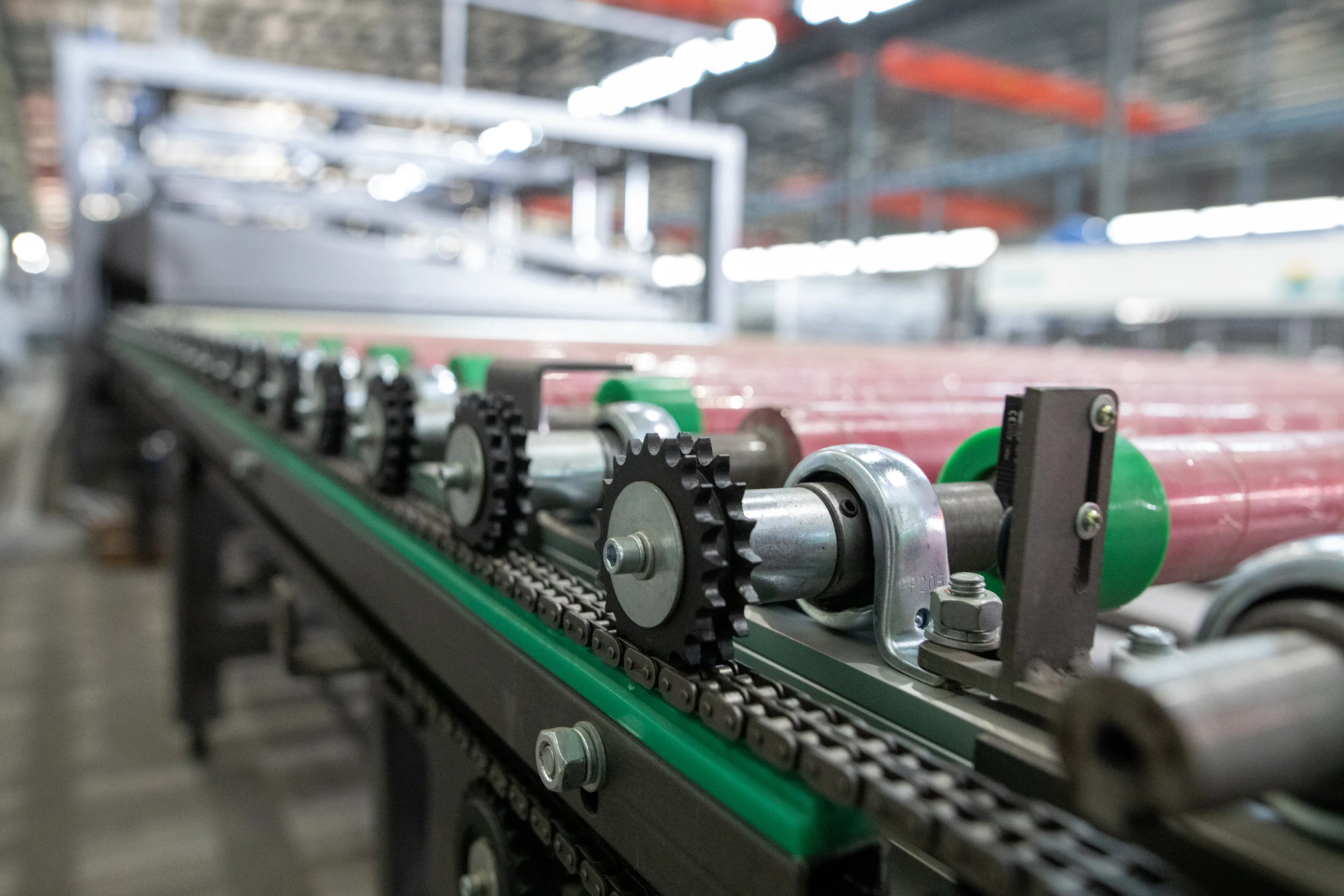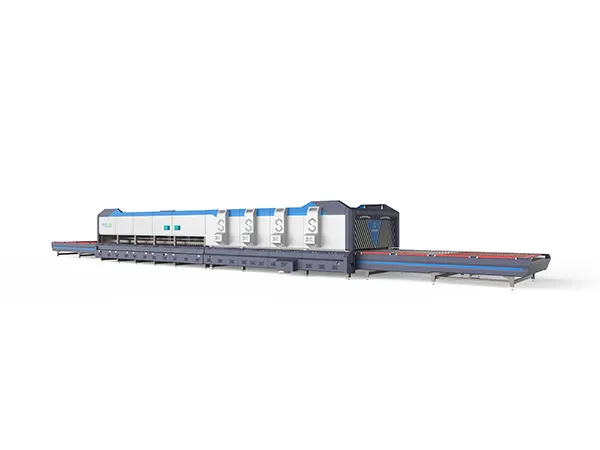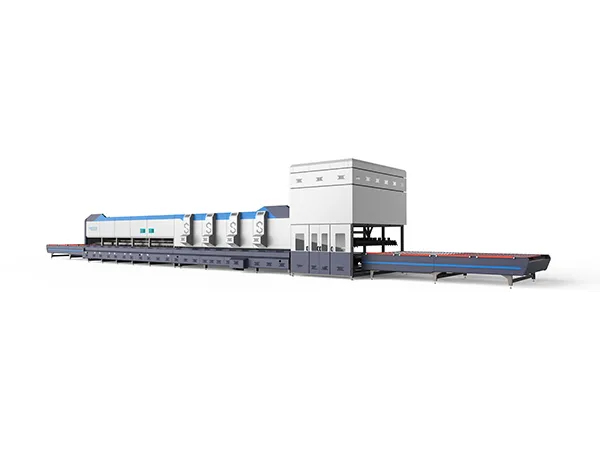A white mist or haze appearing on tempered glass is a common quality issue that can result from various factors during the tempering process. It is often due to contamination, improper heating, or cooling issues. Here’s how to identify the cause and fix it.
Glass Tempering White Mist Solutions

1. Causes of White Mist on Tempered Glass
A. Contamination Before Heating
Dirty Glass Surface: Residual oils, dirt, or cleaning chemicals can burn onto the glass surface during heating.
Improper Washing: Insufficient rinsing in the washing process may leave detergent or hard water residues.
B. Furnace Conditions
Uneven Heating: Temperature inconsistencies in the heating chamber can cause uneven surface stress, leading to haze.
Excessive Heating: Overheating can burn contaminants or create visible distortions.
C. Cooling (Quenching) Issues
Uneven Air Flow: Non-uniform cooling due to blocked or misaligned air nozzles can leave areas of different stress levels, causing haze.
Improper Quenching Pressure: Low or excessively high air pressure during cooling can affect the surface finish.
D. Poor Quality Glass
Low-Quality Raw Glass: Inherent impurities in the glass may become visible after tempering.
2. Solutions to Fix White Mist
A. Pre-Heating Cleaning Process
Improve Washing:
Use a high-quality glass washing machine with effective cleaning and rinsing stages.
Use deionized water to prevent hard water stains.
Inspect for Contaminants:
Ensure all glass is inspected for visible dirt, grease, or residues before loading.
Drying:
Ensure glass is completely dried to avoid water spots entering the furnace.
B. Furnace Adjustments
Temperature Control:
Monitor furnace temperature to ensure uniform heating (typically 620–700°C).
Calibrate heating zones to prevent overheating or underheating specific areas.
Furnace Cleaning:
Regularly clean the furnace to remove debris, dust, and residue that can burn onto the glass.
C. Quenching System Maintenance
Air Flow Calibration:
Check and clean air nozzles to ensure even airflow across the glass surface.
Balance the air pressure to optimize cooling without inducing surface distortions.
Quenching Section Alignment:
Inspect and align the quenching section to ensure uniform cooling.
D. Quality Control
Test Raw Glass:
Source high-quality raw glass with minimal impurities.
Regular Inspections:
Continuously monitor the tempering process and inspect the finished glass for quality issues.

3. Preventative Measures
Regular Maintenance:
Clean and service the furnace, quenching system, and washing machine regularly.
Operator Training:
Ensure operators are trained to handle the glass properly and identify process anomalies.
Process Documentation:
Maintain detailed records of temperature, air pressure, and other parameters for troubleshooting.
4. Corrective Actions for Affected Glass
Unfortunately, once tempered glass has white mist, it cannot be corrected. The glass will need to be replaced. Future occurrences can be minimized by implementing the above solutions.
By addressing these potential causes and maintaining stringent quality controls, you can significantly reduce or eliminate white mist defects in tempered glass.









